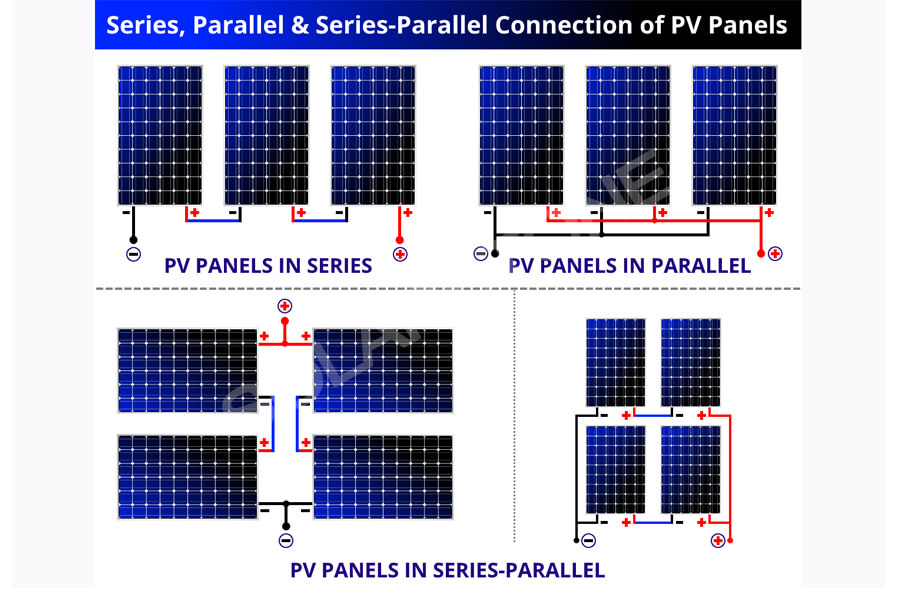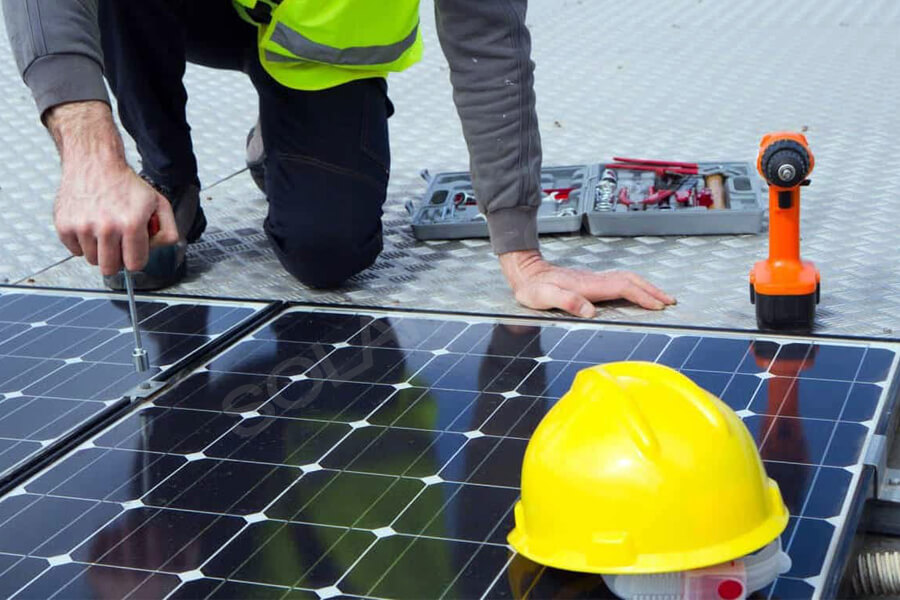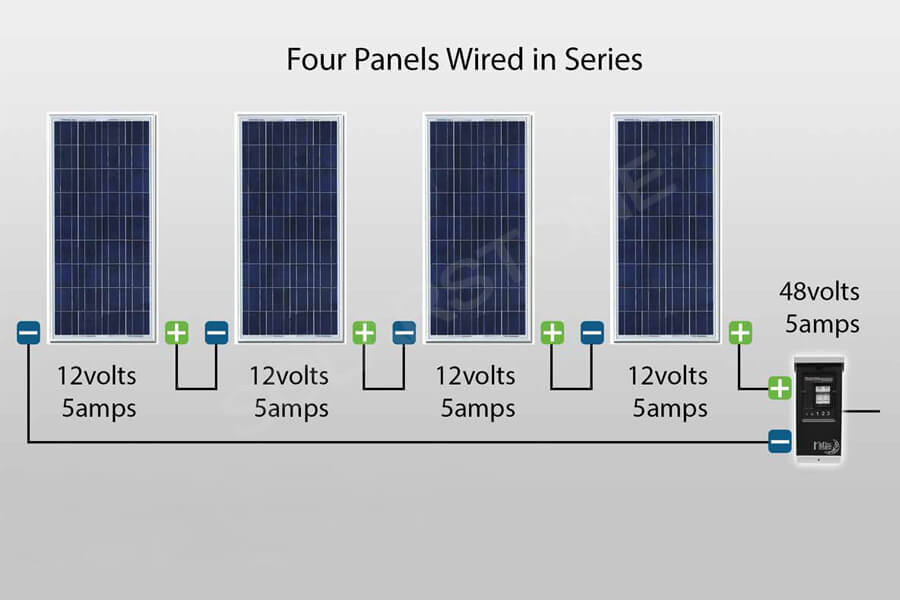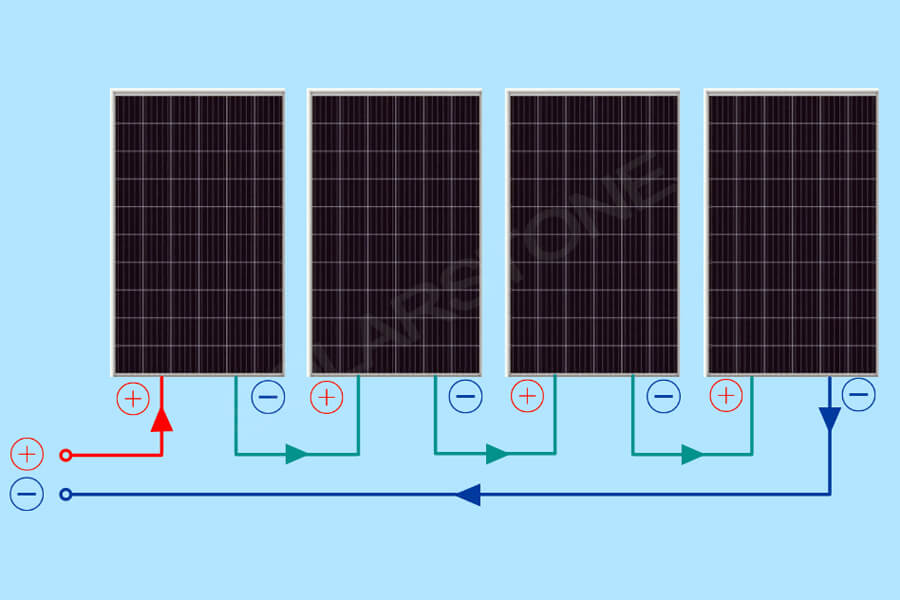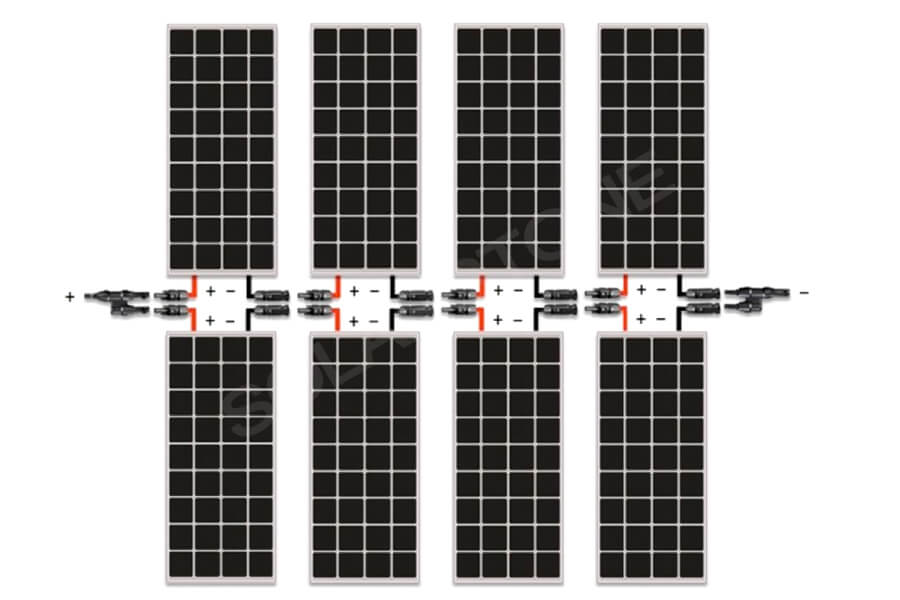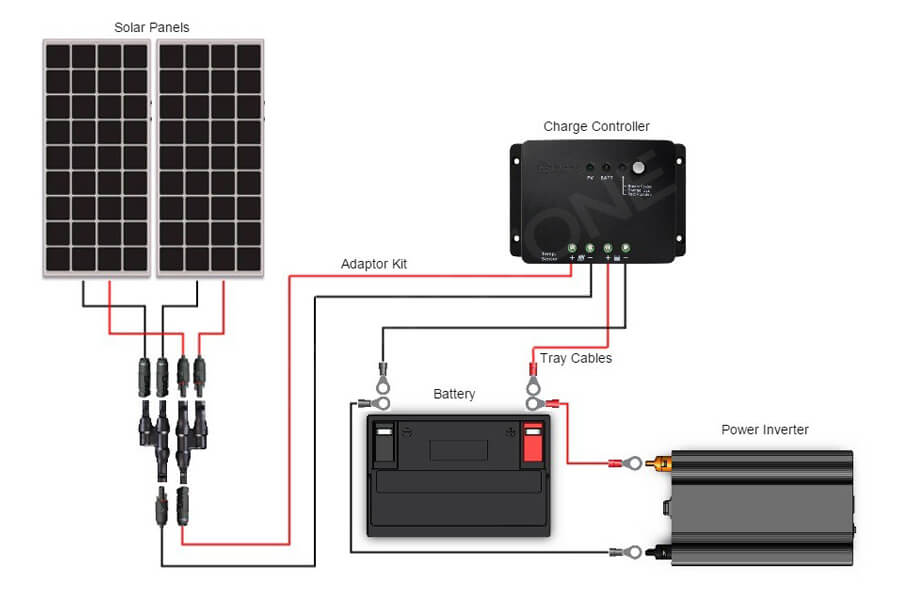Now the price of solar panels is getting lower and lower. For lovers who want to use solar panels as a source of electric energy at home or in the field, it has become very common to set up their own solar panel power supply system.
Solar panel systems usually include solar panels, batteries and controllers. You just connect the solar panel and battery to the controller, and then connect the electrical appliance to the controller. The complex problem is that solar panels are connected in parallel and in series. If you are not a professional engaged in solar panel construction, have you considered whether solar panels should be connected in parallel or in series?
Series connection
Series connection seems to be the simplest method, which is true for traditional batteries, and almost true for solar panels: when two traditional batteries are connected in series, the voltage at both ends of the series battery pack is equivalent to the sum of the voltages at both ends when the two batteries exist alone. Solar panels have the same effect. When you connect two solar panels (such as a panel with a nominal output voltage of 12V) in series, the ideal output voltage at the output end is 24V.
The advantage of this connection is that you increase the total output power without increasing the current flowing through the output line. This makes it unnecessary for the circuit to replace a thicker output line. However, the possible consequence is that the controller originally suitable for 12V output may have to be replaced with 24V version. Another sum of money!
Another problem is the power problem. For solar panels, when connected in series with other power supplies, it is equivalent to current flowing through the panel. In this way, the current limit of solar panels must be considered.
Suppose we connect a 12V 50W solar panel and a 12V 100W solar panel in series. Since the current limit of the former is only half of that of the latter, according to the principle of series current distribution, the current passing through the two will only be the limit of the former. That is, after the two solar panels are connected in series, the electric energy provided is only the nominal value of the latter 100W.
The problem is not only that, when two solar panels are connected in series, if one of them is blocked or damaged by other objects and loses power generation capacity, the whole circuit will be blocked and stop transmitting power to the outside. This is like the damage of other electrical appliances in the series circuit, and the whole circuit becomes open circuit. The simplest way to solve this problem is to use parallel connection.
Parallel connection
In parallel, as long as the solar panels have the same output voltage, they can be connected in parallel to the controller for use. At this time, the power of all solar panels will be added (for example, 50W and 100W solar panels are connected in parallel, and their output power is about 150W). If one of them is damaged, it will not affect the overall voltage, but only the power. This is also the most commonly used connection of solar panels. However, if the voltage difference between the two solar panels is very large, it is best not to connect them in parallel.


